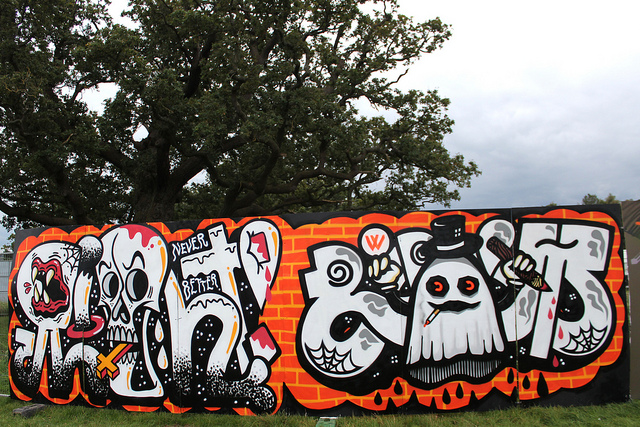
Whatever!
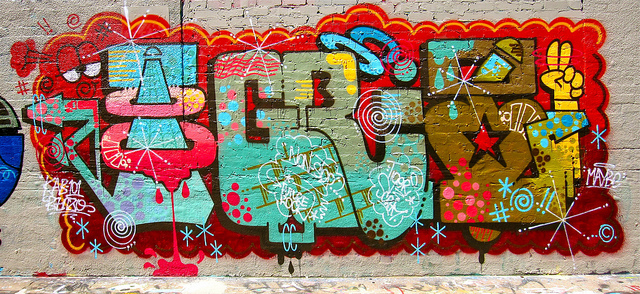

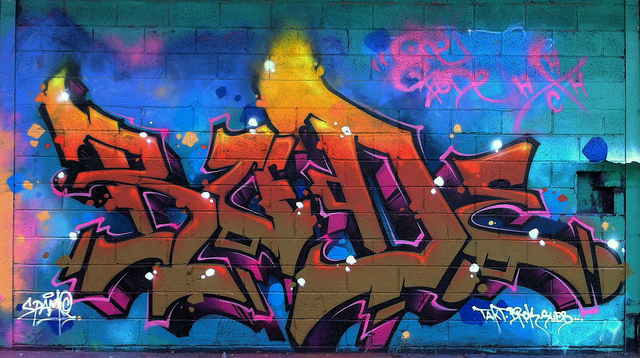
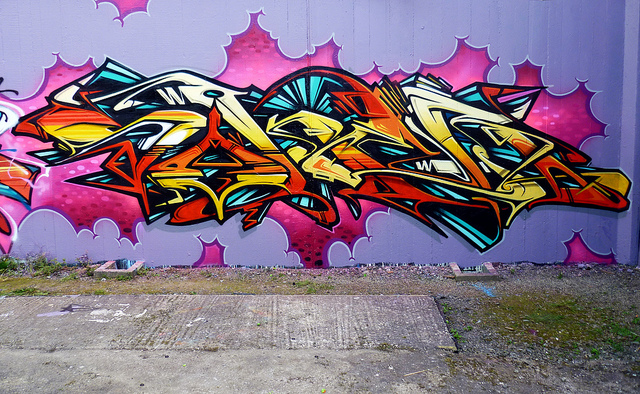
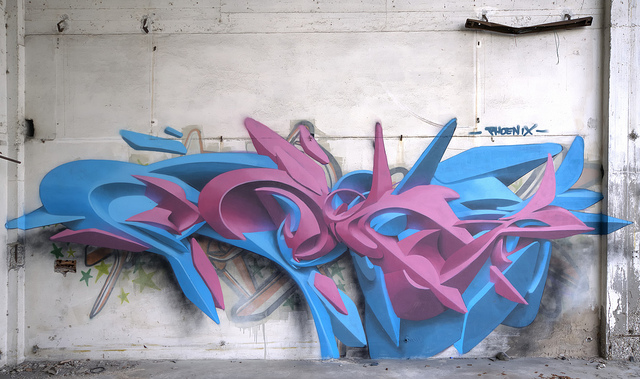
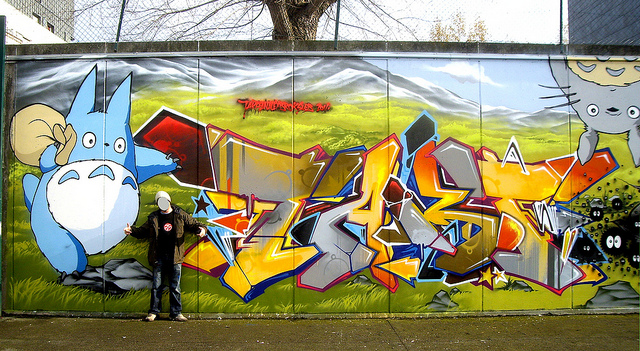
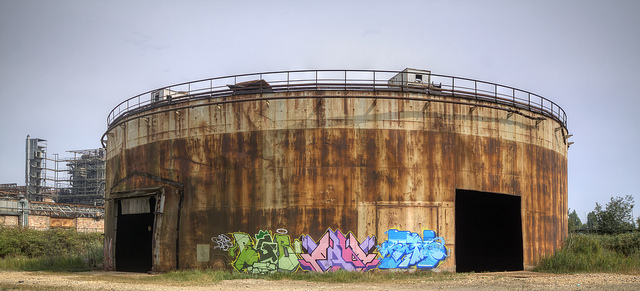
Photos by BadDogWhiskas, Credoum, Herbilizer, Richt-What, Soker and Spam Crew

Whatever!







Photos by BadDogWhiskas, Credoum, Herbilizer, Richt-What, Soker and Spam Crew
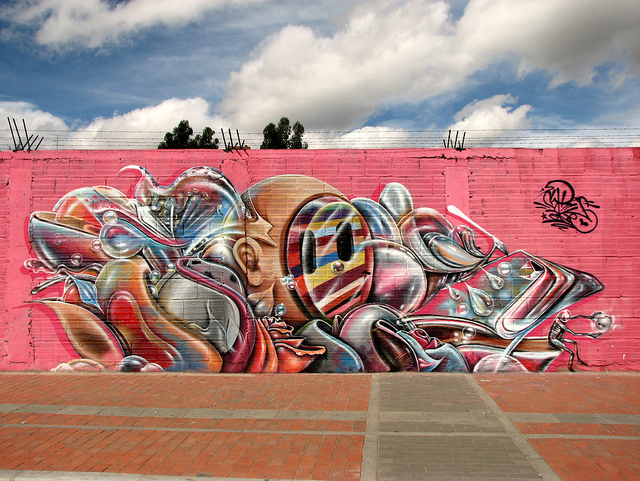
If you are in New York, the New Museum is hosting a screening of a documentary from 1984 called “Graffiti/Post Graffiti”, followed by a panel discussion by Fab Five Freddy, Lady Pink, Patti Asto, and others. It’s happening this Thursday, Oct. 4th at 7pm. For more information or to buy tickets, go here. I’ll be there, so say hello!
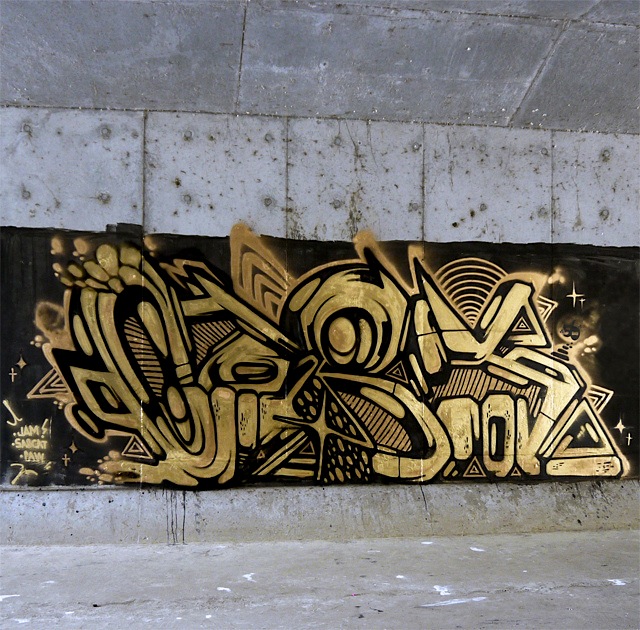
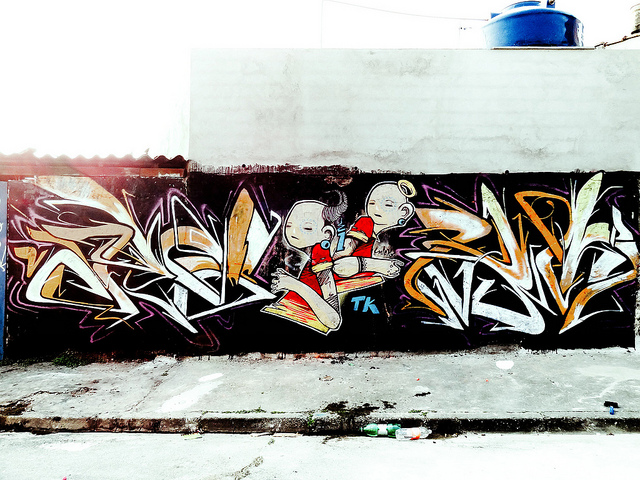
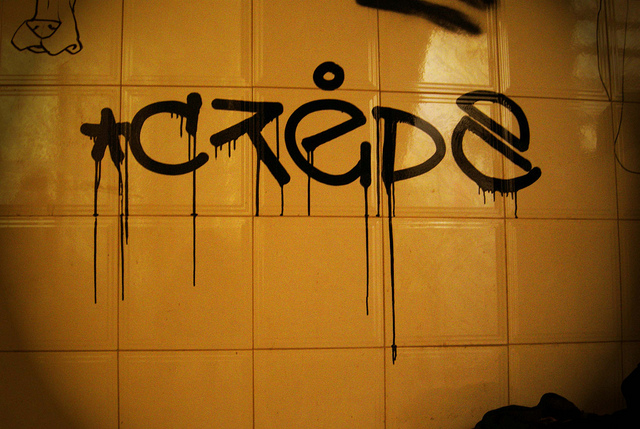
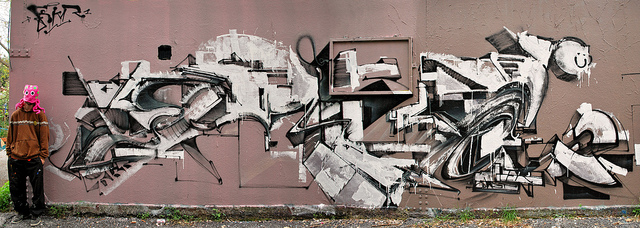

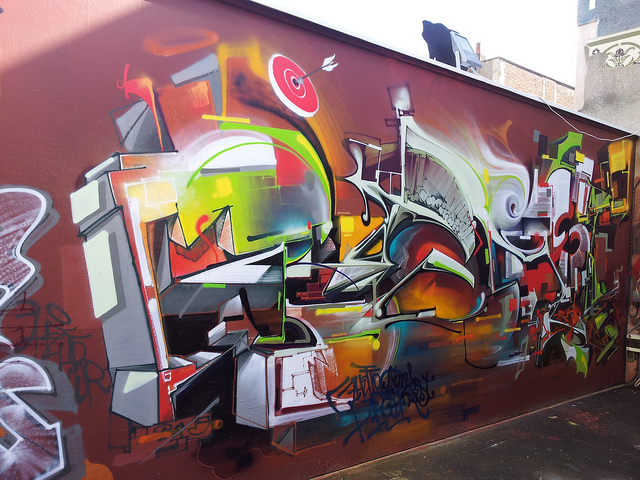
Photos by Credo, FuckSabcat – HongKong, FunkandJazz, GhettoFarceur, Gris, ‘N’ and Startape Photographe

Ollystudio’s book Stencil Republic does not attempt to remind readers of how awesome Blek and Banksy are, or of the importance of John Fekner. Rather, Stencil Republic highlights some of the current favorite stencil street artists (such as A10ne, Run Don’t Walk, Sten & Lex, A*C Alto Contraste, Sr. X, Chris Stain, and more) as it attempts to embrace and delineate the scene as it stands today. As Aiko explains in her intro, stencils have become such a widely embraced tool of expression that many stencil-artists are a flash in the pan, with few maintaining a lasting presence in the scene. Rather than heralding the history-makers, Stencil Republic focuses on the top stencil-cutters of the moment, resulting in a refreshing mixture of strong work by well-known and not-so-well-known stencil artists.
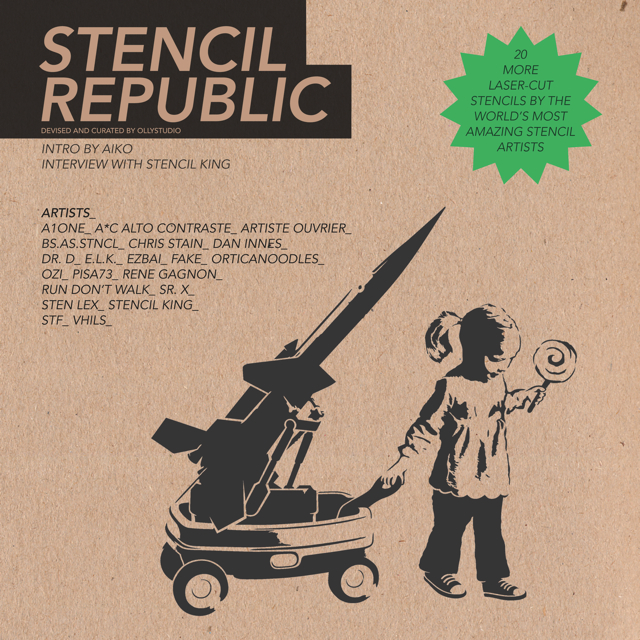

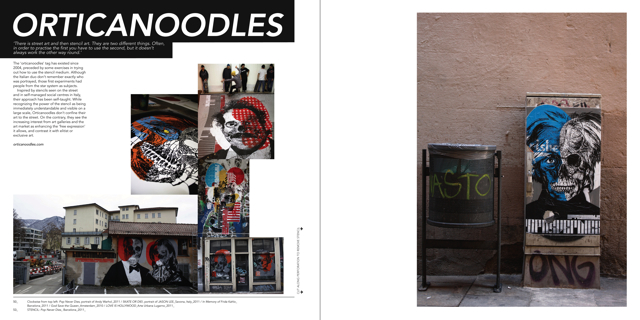
One of the more outstanding and controversial aspects of this book is that, with each introduction to an artist, readers are presented with a laser cut stencil of the artist’s design. While the quality of these stencils are impressive, and in my opinion, what sets this book above others of its kind, I can imagine some contention arising in response to giving the public twenty replica stencils by artists who are potentially still putting up these same works. In a way this controversy is reminiscent of Tox’s court case, where his key defense was the fact that anyone could replicate his tag. By agreeing to participate in Ollystudio’s book, have the artists in Stencil Republic signed on to a sort of vandal-insurance should they ever get caught putting up work illegally?
As I showed some friends this book, I inquired as to whether they, as both the audience of the work and as potential participants in it’s distribution, felt that the artists’ “credit” was being challenged, or thought that “credit” even mattered at all. It seemed that the grassroots understanding of street art was that its intent is to beautify an environment or to spread an idea but not necessarily to proliferate an identity, in contrast to graffiti. In this sense, this book should help to spread street art. But again, this question of identity vs. credit came up, seeing as this was something that each artist who participated in this book needed to consider before agreeing to relinquish the right to recreate and distribute their work to the public. I’m curious if “credit” mattered to them; whether they thought that the public would still know the design was theirs, and whether the person who physically puts a piece up is actually significant to the piece itself. Take the “OBEY” campaign for example: though it started as the individual efforts of Shepard Fairey, the ubiquity of the Andre the Giant icon grew to outstanding proportions when the task of getting the image up was taken over by any willing participant.
I am not bringing up these questions as a criticism of the quality of Ollystudio’s product. Actually, these dilemmas would not exist if these stencils were not so exquisitely cut. I would recommend purchasing this book for a few reasons: 1. It’s a good conversation piece on appropriation of art; 2. You really should get to know these current artists – they’re talented; 3. It is a splendid reminder that vandalizing is fun (but don’t do that -blah blah- legal disclaimer).
Photos courtesy of Laurence King Publishing and by Caroline Caldwell
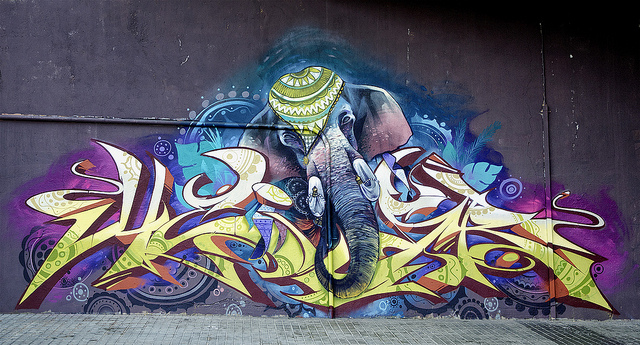
Just listened to the new Flying Lotus album, if you’re wondering why all these pieces look they’ve been beamed down from the Astral Plane.

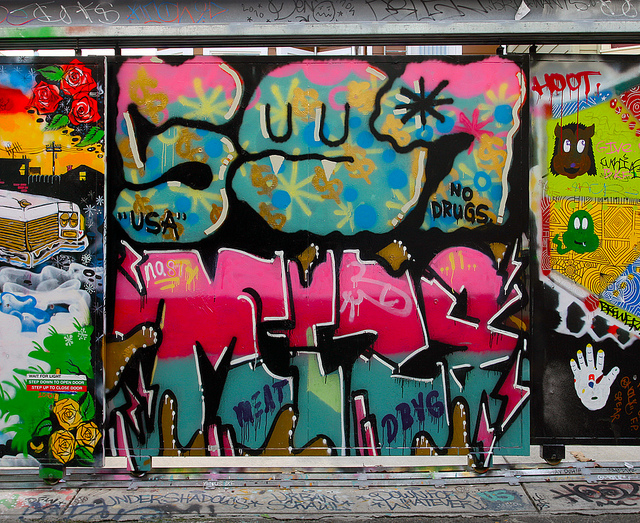
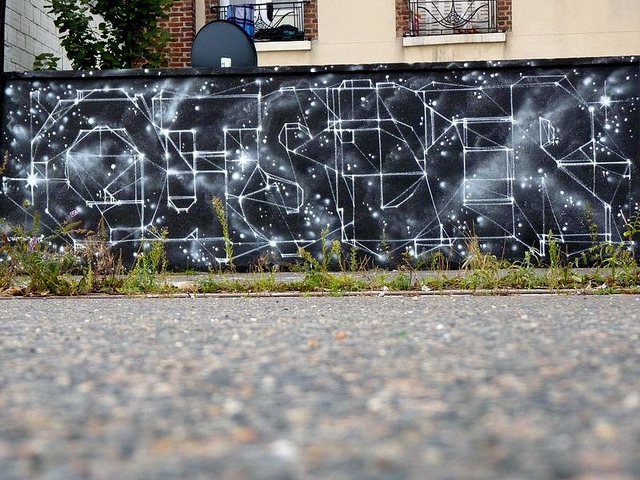
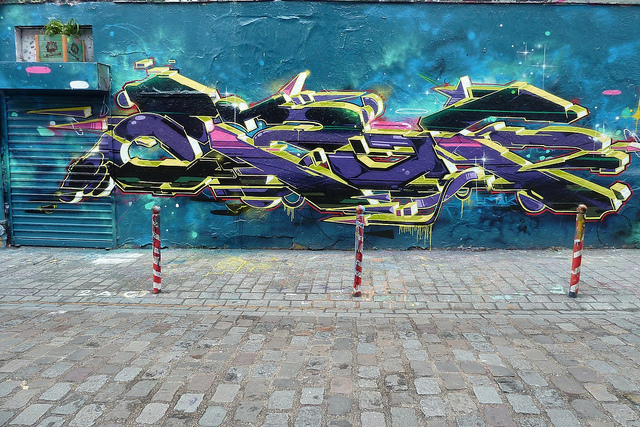
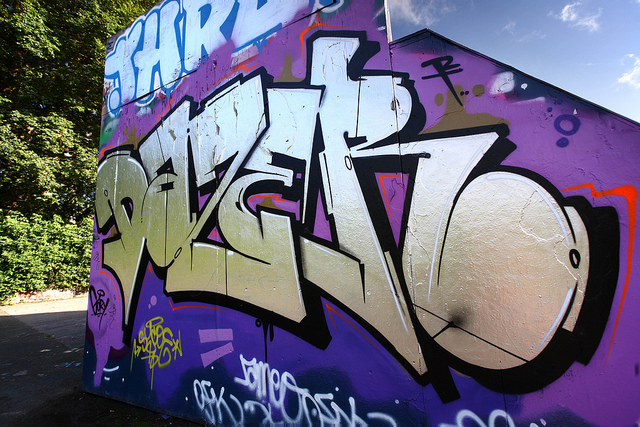

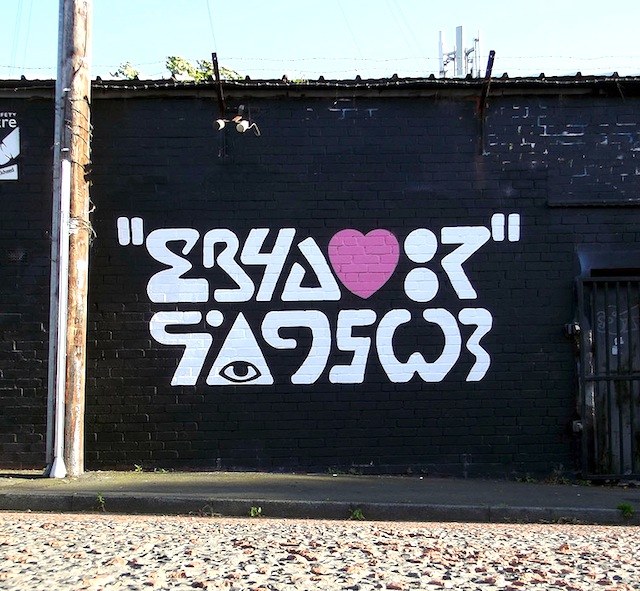
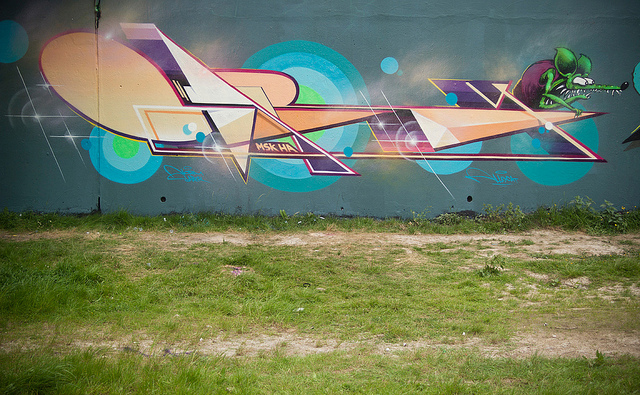
Photos by 4foot2, Chibalove, FunkandJazz, Ironlak, Morac19, MrDheo, Startape Photographe and Vitostreet
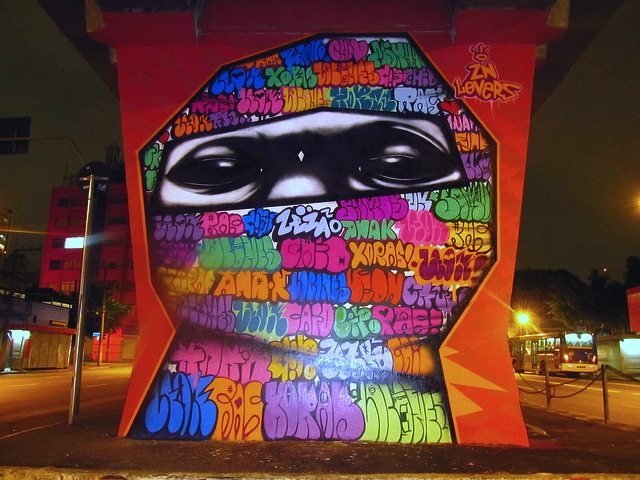
“Graffiti: where community and creativity connect,” said no government ever.

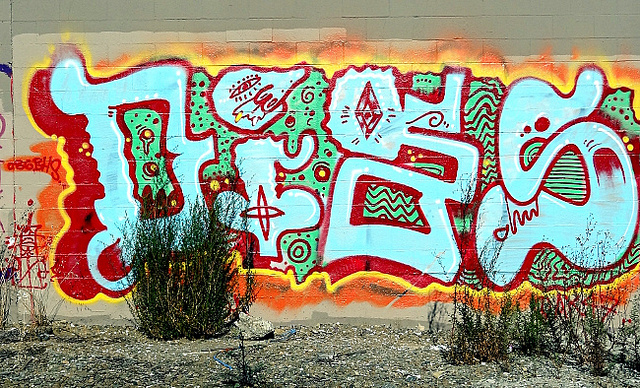
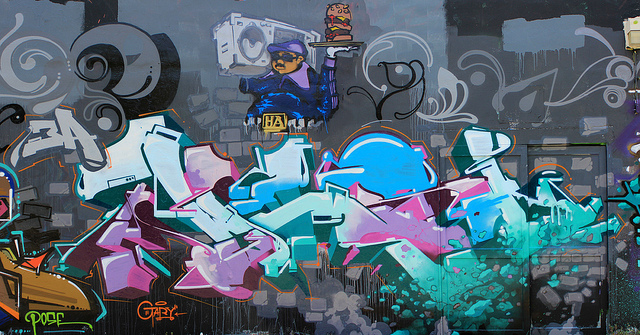
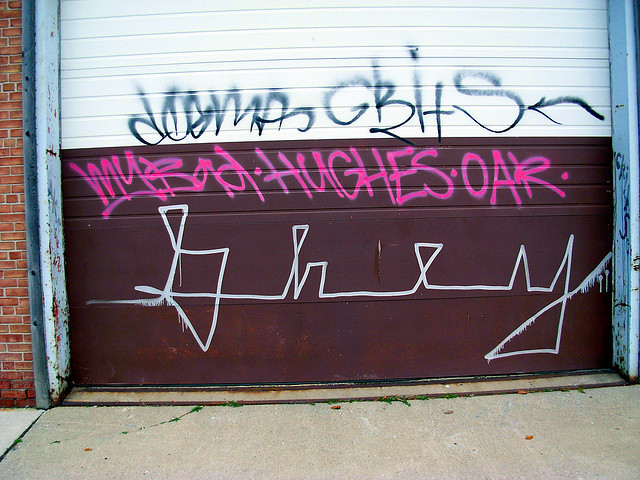
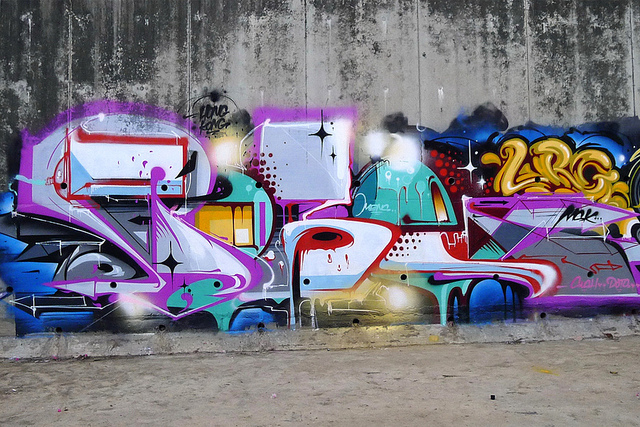
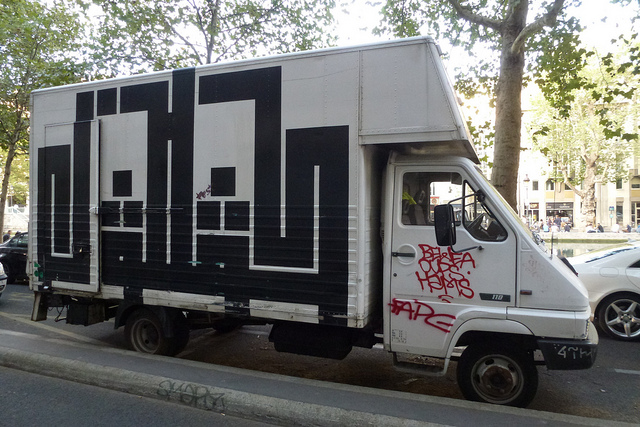
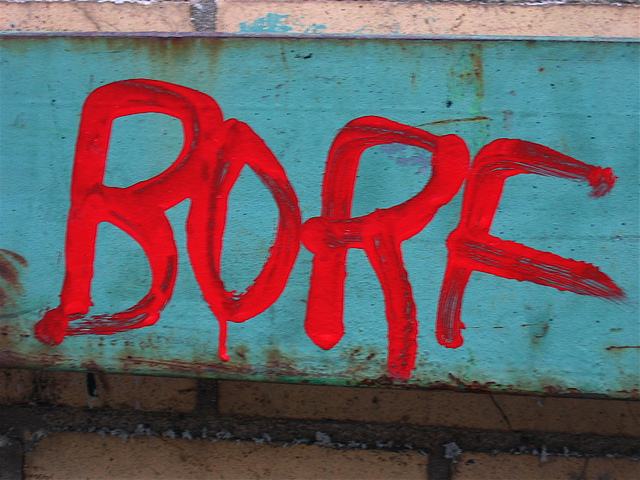
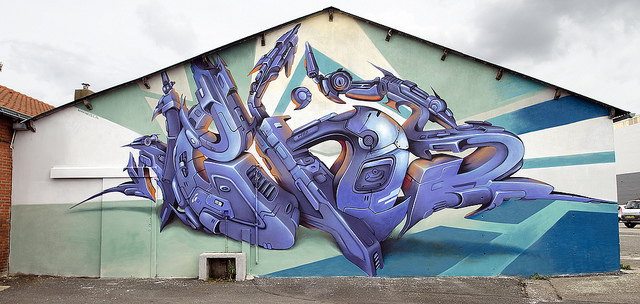
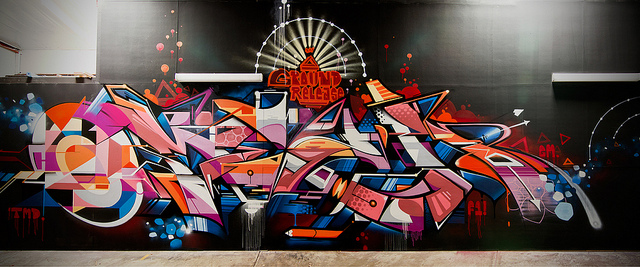
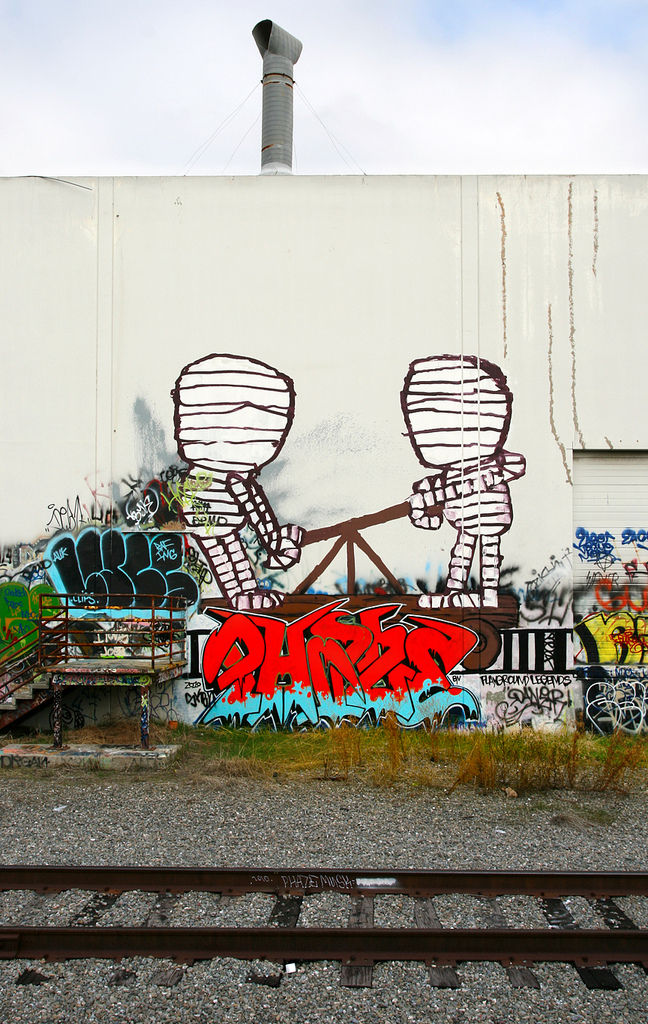
Photos by Billy Craven, ExcuseMySarcasm, Fabah Zadok, FunkandJazz, Heavy Artillery, Lepublicnme, Startape Photographe and thesaltr
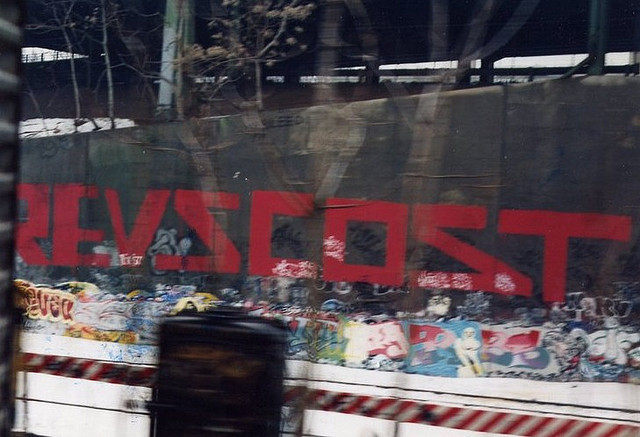
This is Part Two of a two-part interview with Adam COST. You can read Part One here.
COST could sit next to you on a train, or brush by you on the street and you’d likely think nothing of it. I walked by him three times before I finally asked, “Are you Adam?” He is a regular guy. He just happens to have been one of New York City’s most wanted. In Part Two of our interview, COST discusses a number of things including graffiti as a form of rebellion, his relationship with REVS, and, to put it simply, Madonna.
V: How do you see the face of the graffiti writer changing?
COST: Hipsters, like they’re hip! They call them hipsters around here. My friends and I aren’t hip. We’re just like dudes. The older graffiti writers don’t look like the newer graffiti guys. Like REVS looks very working class; he’s very filthy. He’s a welder so he always looks filthy, like he climbed out of a manhole. Me, I try to keep myself clean. I like to present myself that way for aesthetic reasons, like what I do with my life, where I live and how people perceive me. Some of my friends look like nerds, and some of the newer guys we hang out with are real cool, hip-looking guys and fit right in in this area. The newer guys are all like that.
V: But weren’t you guys part of the fashion of the time in the 80’s? Wasn’t graffiti was a cool scene?
COST: I don’t know if we were so fashionable. Our attitude was more like “Fuck you and fuck the system.” We were angry, rebellious guys. There was a definite punk attitude to what we were doing. It was a “Fuck the whole system. Fuck the government. Fuck socialization.” We just revolted against the whole system. Fuck politics and all the politicians. Rudy Giuliani. Stuff like that. We were anti. The best way to describe what we did was like “We’re anti. We’re not artists, we’re anti-artists”. I consider myself an anti-artist if I’m an artist at all. That would be the best way to describe my art. It’s against the system. That’s why I want to show you the Bushwick Five Points wall I just did. At the bottom of the wall, the title, it’s says “You can’t turn rebellion into money.”
I didn’t go to the yard at 13 and say, “You know what? I’m gonna go write on these trains because I want to make money.” You know what I mean? So that’s what inspired the title of the wall. I went to the yard because I was rebelling, and my family situation was not a good one. Looking back, my family was splitting up, like my parents. The whole family was a mess and I was at that age where you get rebellious and I went into graffiti. Guys nowadays are doing graffiti and street art to make money. I don’t do art to make money.
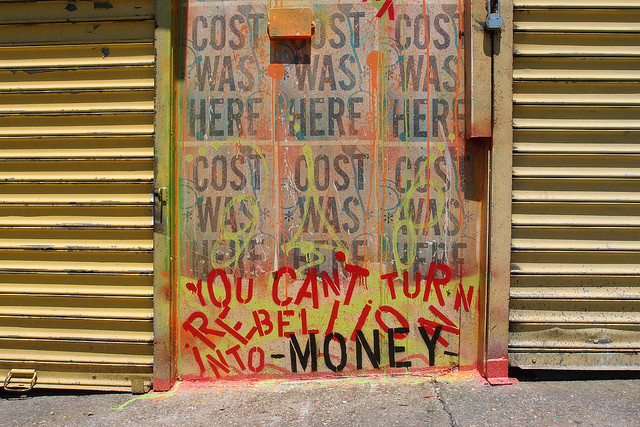
V: Speaking of the fucking of systems, fucking of establishments, and fucking the man….. Did you fuck Madonna?
COST: [Pause] I’m a little younger than Madonna, but I’ll tell ya, she used to hang out at a club called Danceteria. I knew her boyfriend, RP3, who’s dead now. If you look at her old videos, she used to wear a belt buckle tag around her waist that said “BOY TOY.” Boy Toy was that guy RP3. He used to write Boy Toy and RP3, and that was her boyfriend at that time. He ODed and he’s been dead for a long time, but Boy Toy was her tag that he gave her and that’s why she used to wear that in those early videos. I’m not exactly sure when he died. It’s been awhile since the posters, but I think yeah, he probably did see the posters. That poster was like the pop-poster of our campaign. It’s not like I planned it out that way though.
V: Okay, but you have avoided my question.
COST: Have I really? I tried to be as-
V: It’s a yes or no.
COST: Oh, Madonna? You don’t kiss and tell, right? Let’s just leave it at that.
V: Did Madonna ever say anything about it?
COST: I’m sure she knows it exists because she has a publicist. So everything like that is getting plopped on their table and I don’t think she has a problem with it because she was into graffiti and stuff back then.
V: Why did you do it?
COST: I don’t know if there was an exact reason. At the time it was just one of our obscure posters. We were producing a lot of just random stuff, and that one seemed hit the nail on the head for your ham-and-eggers, your average Joe’s. Everyone loved that one. We did many versions of posters and people always say that poster is probably the most recognized of the batches and batches we put out. That was the most accepted. And again, she’s an icon. Madonna is an international icon. She’s like a Michael Jackson or something. So I was using an icon as a prop, I guess.
V: That poster was extremely popular. Supreme turned it into a shirt in 2010.
COST: Yeah, certain posters like “COST Fucked Madonna” were very accepted by society. There’s a lot of knock-offs. There are stickers and posters out there like “ELVIS FUCKED MARILYN.” I didn’t see that coming. I didn’t think it was going to bring such an acceptance with the public, but the public really absorbed that poster.
V: After years of turning down other offers, why did you choose to collaborate with Supreme?
COST: They put Johnny Rotten from The Sex Pistols on the cover of the magazine and that kind of appealed to me, as opposed to Lady Gaga on the cover. It was a little more my speed. More raw, less pop. They understood the direction that I wanted to go and what I wanted my work to represent, in a sense. They were good to catering to me as an artist, in the sense that they just let me be who I wanted to be within their repertoire and it worked, I guess. It was okay.
V: Now that you’re starting to go heavy with wheatpasting again, what’s different this time around?
COST: I’m definitely using new fonts and new slogans. At this point it’s like I’m kind of in phase 1 of probably a 15 or 20 phase period, and phase 1 is really just getting my name back out on the streets and letting people know that I’m here, I’m there, I’m everywhere. It’s just phase 1 of a slow steady process of probably a 20 phase period I call “moving forward towards death.” Continue reading “Vandalog interviewed COST – Part two”
ABOVE recently released this time lapse video regarding the extreme popularity of social media. It’s a bit like having a mirror put between yourself and your computer screen. I don’t know though, I’m pretty sure he’s trying to say that you should tweet this or post this on Facebook so all your “friends” can ‘like’ it.
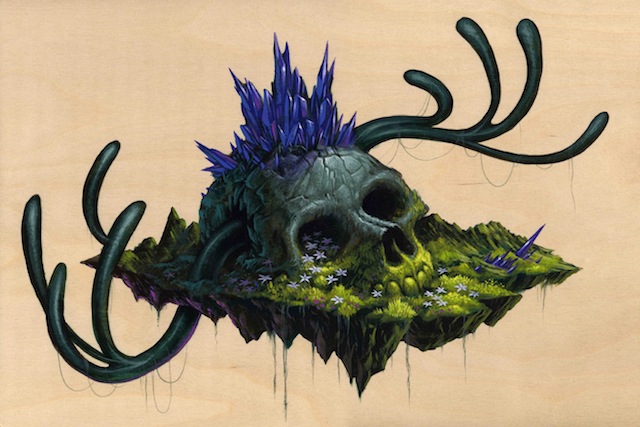
Jeff Soto will be opening his fourth solo show at Jonathan LeVine Gallery on September 8th, alongside the simultaneous solo shows of Audrey Kawasaki and Judith Supine. The show, entitled Decay and Overgrowth, explores life, death and the passage of time. In this interview, Soto tells Vandalog about the emotional journey this past year has taken him on, including the death of two of his grandparents, and how these events provoked his consideration of mortality; which would become a central theme of this show.
V: In your own words, can you tell us about the underlying themes of Decay and Overgrowth?
JS: I started researching my ancestry about seven years ago, well, even before that really. As a kid I knew my grandparents fought in WWII and my grandma would list off all the things we had in us- Irish, Italian, Sioux, Dutch, etc.. These stories were interesting to me. So from an early age I was aware that there is some history there, and at some point a teacher I had showed us family trees. When I was a teenager I saw Norman Rockwell’s family tree painting where the kid’s ancestors were pirates and Native Americans and cowboys. It got me interested in who my ancestors were, and how all my living relatives were related.
The last few years I have researched and got deeper into who these people were. Decay and Overgrowth comes out of this research. Finding all these relatives really drove home the point that we are born, we have kids, get married, live our life and die. And then the kids repeat the same pattern. Our offspring who come into the world like new flowers, growing and flourishing, eventually meet the same fate as any other living thing. We start aging, and at some point we all will die. We turn to dust, go back into the Earth to nourish it, and then the cycle repeats. I don’t see it as morbid at all, and I hope the paintings don’t seem too death obsessed! Even though I’ve unofficially titled my show “The Skull Show”.
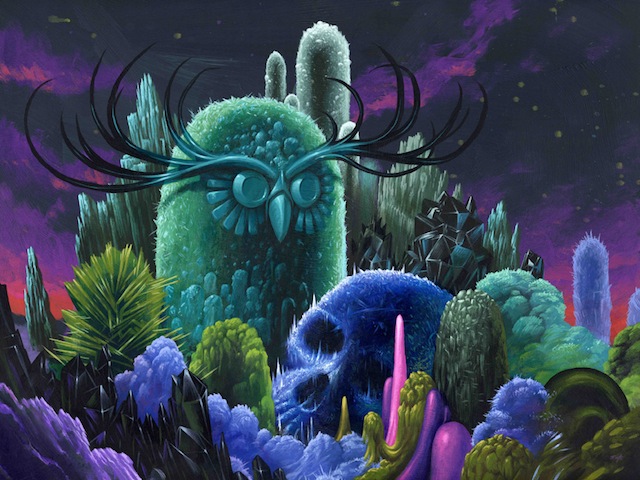
V: This is a solo show, but you’re showing at the same time as Audrey Kawasaki’s and Judith Supine’s solo shows. How do you feel like this combination of works either compliment or juxtapose one another?
JS: I respect both of them. I know Audrey a bit but have never met Judith. I think as a whole our work is very different but individually we’re each very strong in what we do. Should be a fun show with something for everyone. I am predicting a large turnout.
V: Was this exploration of mortality more of a catharsis for you or a way of explaining death to your children?
JS: It’s more for me I guess. They’re too young to fully understand death. We do not hide it from them at all, you know, like if one of our fish dies or we find a dead rabbit on a walk, we talk about it. Two of my grandparents passed away in the last year, and they went to the funerals even though they’re young. I never really thought about death because it was not around me. Or maybe it’s an age thing- now that I’m in my mid/late 30’s and I have two kids that depend on me, it’s on my mind. Seeing my little brothers grow up and my parents age has been a trip.

V: What do you think your generation adds to the collective human experience?
JS: I think it’s too early to say. There’s good and bad things we’re going to add. I know that my generation seems more open to cultural differences among people. In the United States, overall we’re less racist than 40 years ago, and I think the next generation will be better than us. There’s still a long way to go but the situation is improving from the Baby Boomers and previous generations.
And of course the internet has made huge changes. For the first time in human history information is easily accessible to most people. It is empowering. Maybe it’s homogenizing us as well. It’s that whole globalization thing, we all buy the same products, listen to the same music and watch the same movies- are cultural differences starting to die out? Technology is good and bad I think. I’m 37, so I grew up with Atari which was fun, but only for about 30 minutes then we’d go outside and build a fort, climb a tree, make up a game… we used our imagination! I think that’s lacking in many kids and I wonder how it will change things. Maybe it already has. I graduated high school right as the internet was going mainstream- 1993. Our school had one computer that was online and the only thing we could access was college libraries in town. We had to search and hunt for our info, we had to go downtown and pour through a ton of books and along the way we would find other interesting books and much more thoroughly researched information. Now all the info is easily and quickly accessed in a nice little five paragraph web page. I do love Wikipedia, but 20 years ago you’d read a 300 page book on say, Cortés, now a kid in high school will read a concise web page on the iPad. Maybe that’s not so bad, I guess the Wiki entry would have much more up to date info… see, technology that this generation is bringing is both good and bad.
Continue reading “Interview: Jeff Soto”
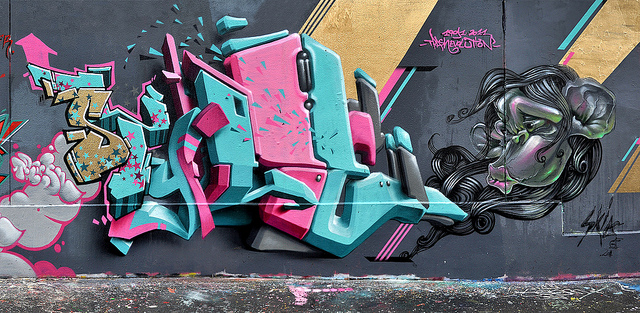
Make your mother proud.
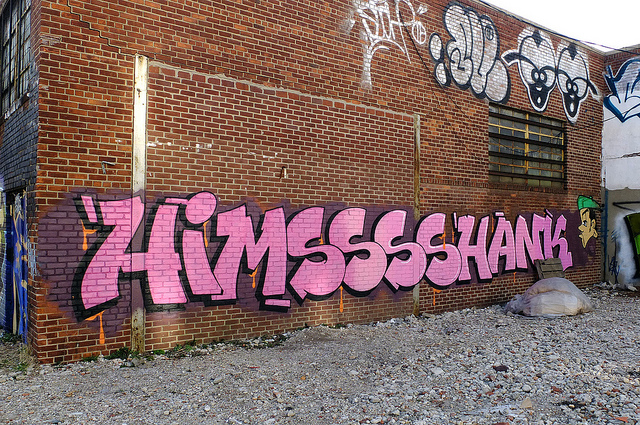
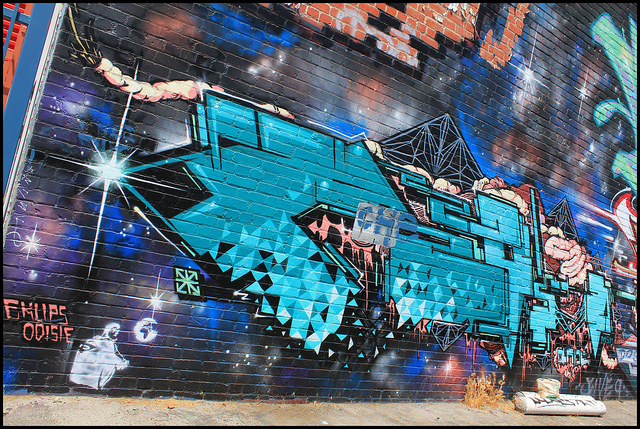
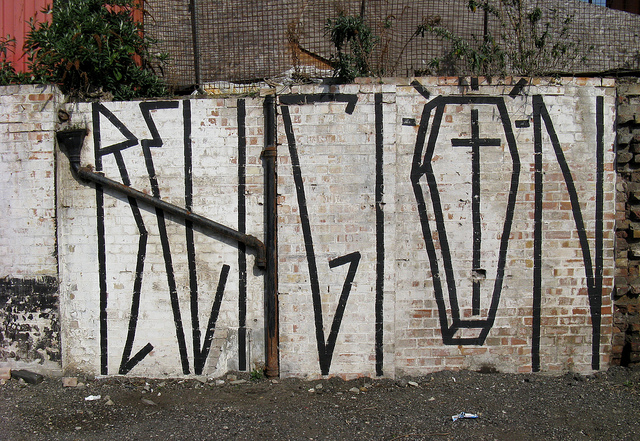
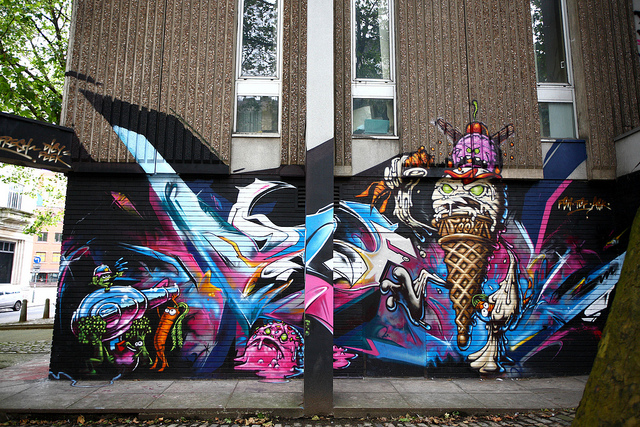
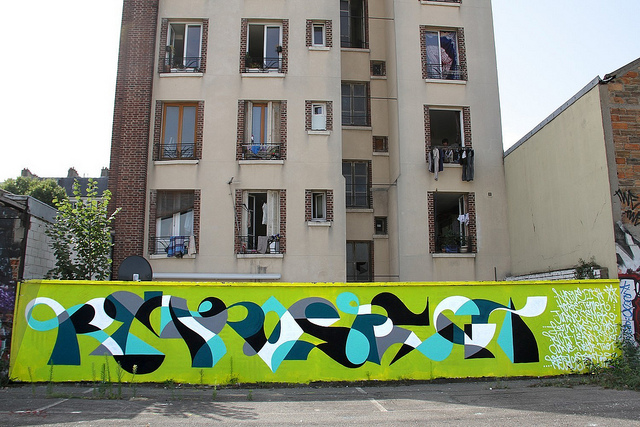
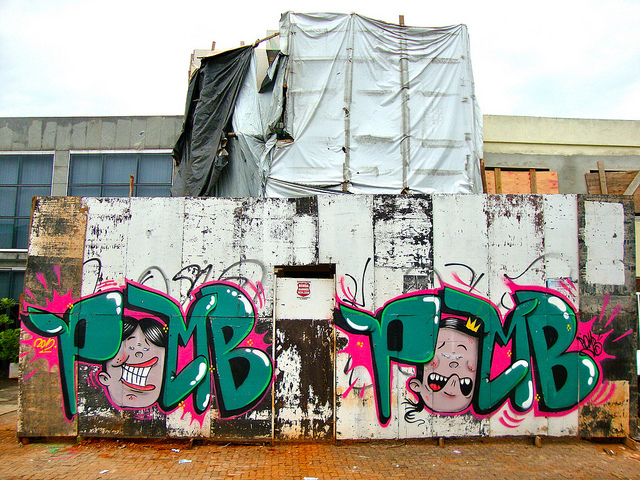

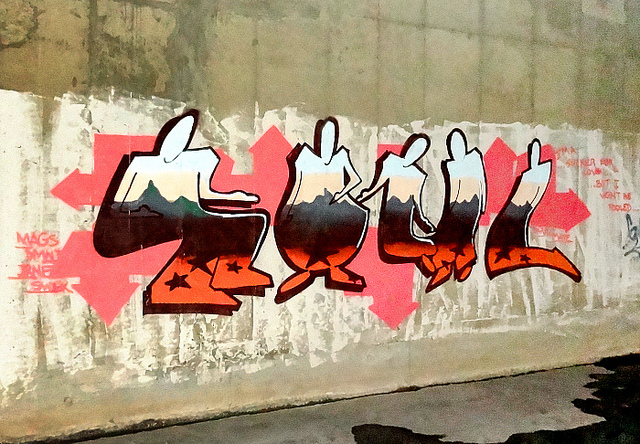
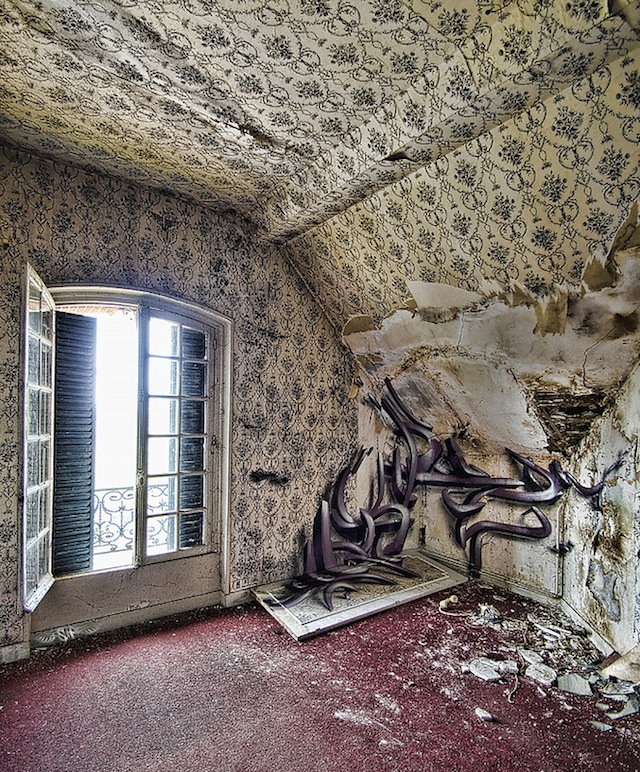
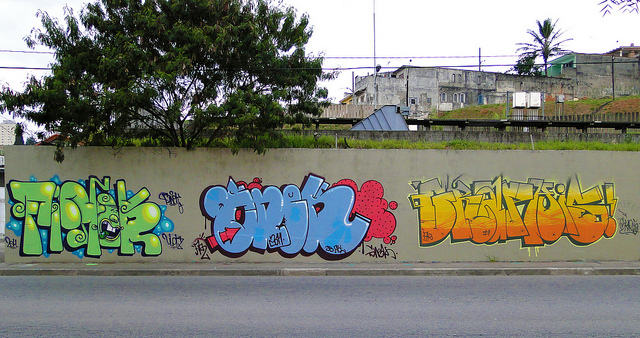
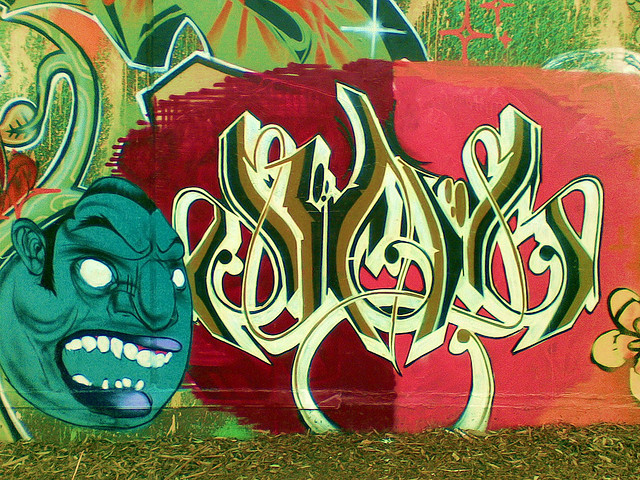
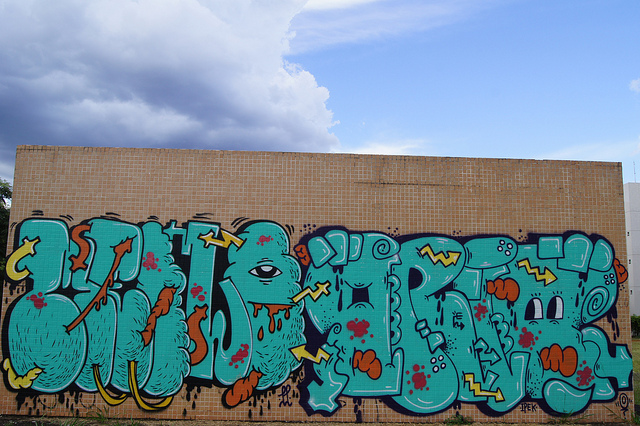
Photos by 4foot2, Big Bozo, Damonabnormal, FunkandJazz Graphis, Morac19, P. Matheus Lacerda, Tha Sieg Monsterrr, SOKE, Startape Photographe and ThalesFernando